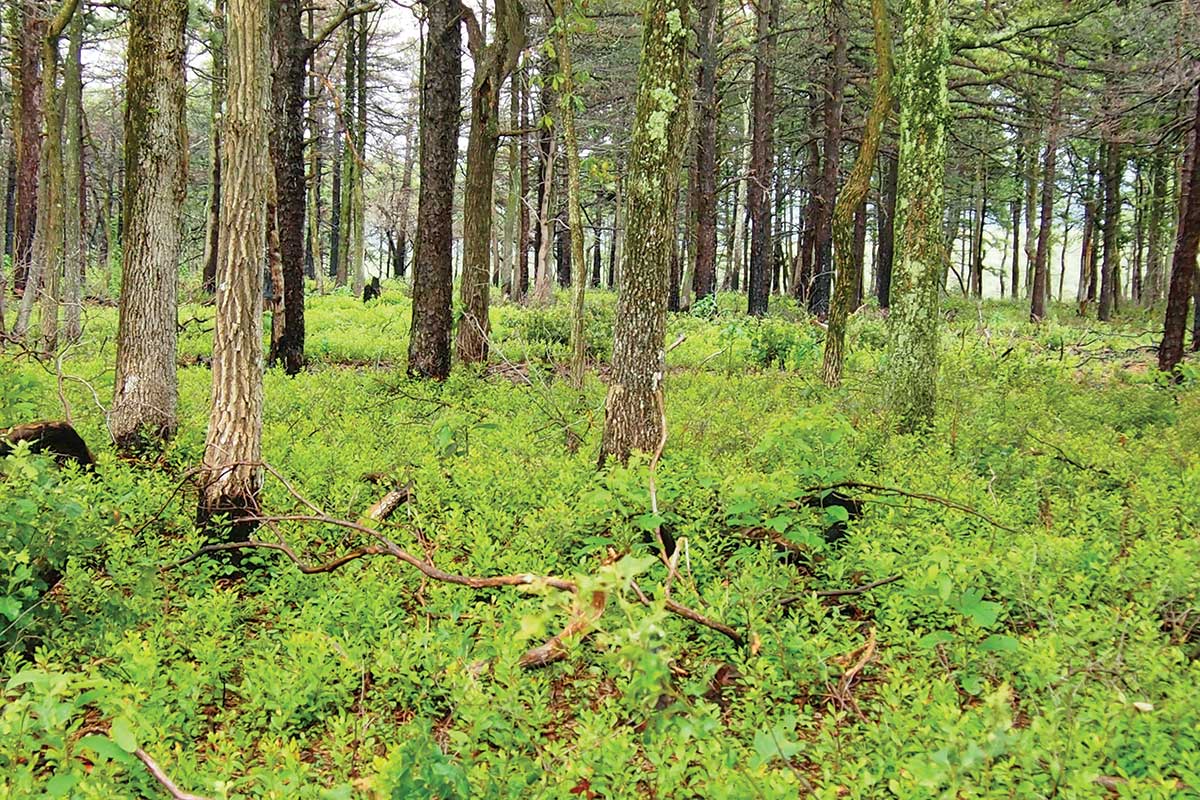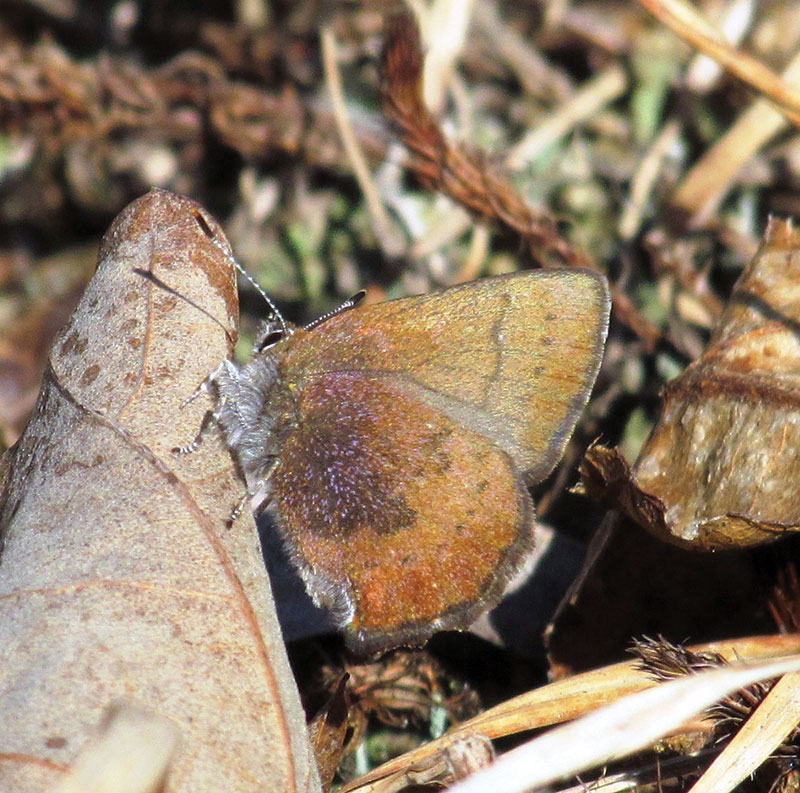
Pitch Pine
(Pinus rigida) — is a small to medium sized hard pine species.
Often with an irregular growth that is twisted and gnarled in appearance, this shade-intolerant species can inhabit low nutrient areas with harsh conditions.
Pitch Pine is found in the eastern United States from southern Maine to northern Georgia.
Total life span of a pitch pine is approximately 200 years.


Scrub Oak
(Quercus ilicifolia) — sometimes called bear oak, grows as a small gnarled tree or shrub.
The species is restricted mostly to the northeastern U.S.
Scrub oak ranges from 3-30 ft. in height and generally has a life span of only 20-30 years.

Pitch Pine
(Pinus rigida) — is a small to medium sized hard pine species.
Often with an irregular growth that is twisted and gnarled in appearance, this shade-intolerant species can inhabit low nutrient areas with harsh conditions.
Pitch Pine is found in the eastern United States from southern Maine to northern Georgia.
Total life span of a pitch pine is approximately 200 years.

Scrub Oak
(Quercus ilicifolia) — sometimes called bear oak, grows as a small gnarled tree or shrub.
The species is restricted mostly to the northeastern U.S.
Scrub oak ranges from 3-30 ft. in height and generally has a life span of only 20-30 years.
Pitch Pine Scrub Oak Barrens
By Marian Orlousky
THE PITCH PINE
— scrub oak barren habitat is characteristic of ridgetop areas in New York, New Jersey, Pennsylvania, Maryland, and south through the Appalachian Highlands and Blue Ridge Province. These barrens are found in areas where weather conditions are variable and often extreme, and where soils are thin, well drained, sandy, acidic and nutrient poor. This habitat is sometimes referred to as “ridgetop dwarf-tree forests” because of the tendency for the tree growth to be stunted under the harsh conditions.
While this environment is not suitable for many Appalachian tree species, hardier species like pitch pine, are able to thrive here.
An example of this unique community type exists along the Appalachian Trail, on Big Flat Ridge, along the South Mountain in Pennsylvania. “A hike on the Appalachian Trail though this area, carries hikers deep into dense shrublands dotted with stands of rugged pitch pines. Openings in the shrub thickets are lush with lowbush blueberries that offer sweet snacks to human visitors passing through in late summer, as well as to resident wildlife,” explains Betsy Leppo, an Invertebrate Zoologist with the Western Pennsylvania Conservancy (WPC) specializing in moth and butterfly (Lepidoptera) studies.
These ridge-top barren communities offer diverse and complex habitat. The scrubby understory structure provides both forage and cover to a variety of rare and declining plant and animal species, some of which are found exclusively in this area. In Pennsylvania alone, the pitch pine – scrub oak habitat contains 31 plant associates. According to Leppo, surveys at Big Flat Ridge have thus far documented the presence of 48 state rare moth species and one globally rare species. The Pennsylvania Game Commission highlights the moister areas of these barrens as being utilized by American woodcock and ruffed grouse, two “species of greatest conservation need” listed in the Pennsylvania Wildlife Action Plan; and protected species like the Allegheny woodrat or timber rattlesnake may be found in barren areas with rocky outcroppings.

From top: Recovering pitch pine/scrub oak barren along the A.T. on the South Mountain after a prescribed burn and forestry mowing; Brown elfin butterfly (Callophrys augustinu) — This rare butterfly species is just one conservation target for the Michaux Pine Barrens. Photos by Betsy Leppo

It’s no coincidence that the species associated with these barren habitats are often considered rare. While historically these pine-oak environments existed as a mosaic of constantly changing barren communities across the ridge landscape, on our modern landscape, this unique community type is also becoming less common. Pine-oak barrens are fire-dependent with fire-adapted regeneration strategies that had been sustained for thousands of years by lightning strikes and Native American fire starts. Today these communities are on the decline in great part due to long-standing fire suppression practices, forest succession, and introduced pine plantations.
In 2012, Michaux State Forest (under the Pennsylvania Department of Conservation and Natural Resources) and partners such as the Appalachian Trail Conservancy, the WPC and the Pennsylvania Game Commission, began management and restoration of the Big Flat Pine Barrens. Various management techniques, including forestry mowing, selective thinning and controlled burns, have been utilized to recover and sustain this critical habitat. In 2018, a nearly 1,400-acre burn was completed along the ridge — one of the largest prescribed burns ever conducted by the state. The burn served to encourage desirable habitat, improve oak regeneration, and reduce dangerous fuel loads that have the potential to lead to catastrophic wildfires. As monitoring of this community continues, forest managers and conservationist alike are optimistic that imperiled wildlife species will be able to rebound and thrive in this unique environment of the Appalachian Mountains.